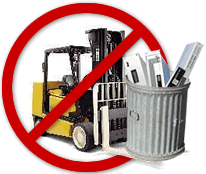Check out our White Paper Series!
A complete library of helpful advice and survival guides for every aspect of system monitoring and control.
1-800-693-0351
Have a specific question? Ask our team of expert engineers and get a specific answer!
Sign up for the next DPS Factory Training!

Whether you're new to our equipment or you've used it for years, DPS factory training is the best way to get more from your monitoring.
Reserve Your Seat TodayIt's hard enough maintaining one legacy monitoring system. What if you have two? There's all kinds of reasons why you may have two or more incompatible systems. Older equipment tends to accumulate in layers, with different systems being used to monitor different parts of the network. Or if your company has acquired another, you may be responsible for two incompatible networks.
But then you're faced with the problem of integrating the two systems. And even if you don't have two legacy systems, you may still have to integrate your telemetry monitoring to your company's modern SNMP network management system.
Old legacy monitoring equipment is a huge barrier to system integration. Proprietary protocols and slow serial transports don't seamlessly connect with SNMP and Ethernet.
Despite all the disadvantages of an older alarm monitoring system, many network managers think that they can't possibly afford to replace their legacy equipment - not without a budget-crushing forklift swapout.
Older network alarm monitoring systems are designed for one type of master station that receives alarm reports from one type of remote telemetry unit. You can't replace one part of the system by itself - you must replace the whole system at once.

A systemwide forklift swapout makes no sense, either financially or technically: